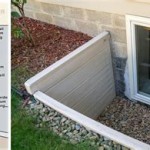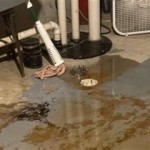How to Treat Mold in Basement
Mold growth in basements is a common problem caused by excessive moisture and humidity. If left untreated, mold can pose serious health risks and damage your property. Here are some essential aspects of how to effectively treat mold in basements:
1. Identify and Control Moisture Sources
The first step in mold remediation is to identify and eliminate the sources of moisture fueling its growth. Common sources include leaks in plumbing pipes, roof damage, poor ventilation, and flooding. Repair any leaks promptly and improve ventilation by installing exhaust fans or dehumidifiers. Seal any cracks or gaps in walls and floors to prevent water intrusion.
2. Remove Visible Mold
Once the moisture source is controlled, you need to remove visible mold growth. Wear protective gear such as a mask, gloves, and goggles to avoid inhaling mold spores. Use a bleach solution (1 cup bleach per gallon of water) or a commercial mold cleaner to kill and remove mold from surfaces. Scrub moldy areas with a stiff brush and rinse thoroughly with clean water.
3. Dry and Ventilate the Basement
After removing mold, it's crucial to dry the basement thoroughly to prevent regrowth. Use fans, dehumidifiers, and air conditioners to circulate air and reduce humidity. Keep the basement well-ventilated by opening windows and doors to allow fresh air in. Monitor the humidity levels using a hygrometer and aim to maintain them below 50%.
4. Use Mold-Resistant Materials
To prevent mold from returning, consider using mold-resistant materials in your basement. Replace drywall with mold-resistant drywall or use mold-resistant paint on walls. Use mold-resistant sealant around windows, doors, and plumbing fixtures. Avoid using carpets or rugs in the basement, as they can trap moisture and promote mold growth.
5. Regular Inspection and Cleaning
Once the mold has been treated, it's essential to inspect your basement regularly for any signs of regrowth. Check for moisture accumulation, musty odors, and visible mold. Clean any moldy areas promptly and take steps to address the underlying cause. Regular cleaning and maintenance can help prevent mold from becoming a persistent problem.
6. Professional Mold Remediation
In some cases, mold can be extensive, difficult to remove, or pose significant health risks. If you suspect a severe mold problem, it's advisable to seek professional mold remediation services. Certified professionals have specialized equipment and expertise to effectively identify, remove, and prevent mold growth.
Conclusion
Mold in basements can be a concerning issue, but it can be effectively treated with the right approach. By identifying and controlling moisture sources, removing visible mold, drying and ventilating the basement, using mold-resistant materials, and practicing regular inspection and cleaning, you can create a healthy and mold-free basement environment.

Removing Mold In Your Basement 5 Steps Woodard

How To Remove Mold From Basement Walls In 2024

How To Remove Mold Black In Basement

Mold In The Basement Hgtv

What You Need To Know About Mold From Basement Flooding

How To Get Rid Of Black Mold In Your Basement Acculevel

How To Remove Mold From Basement Walls Get Rid Of Molds Concrete Air Quality Express

Tips To Get Rid Of Mold In Basement Nationwide Restorations

Basement Mold Removal Black Remediation

How To Clean Mold On Basement Walls And Prevent Reoccurrence
See Also








